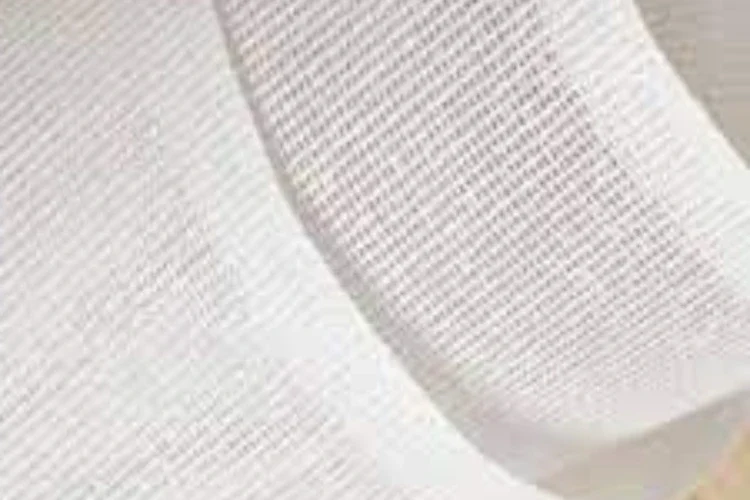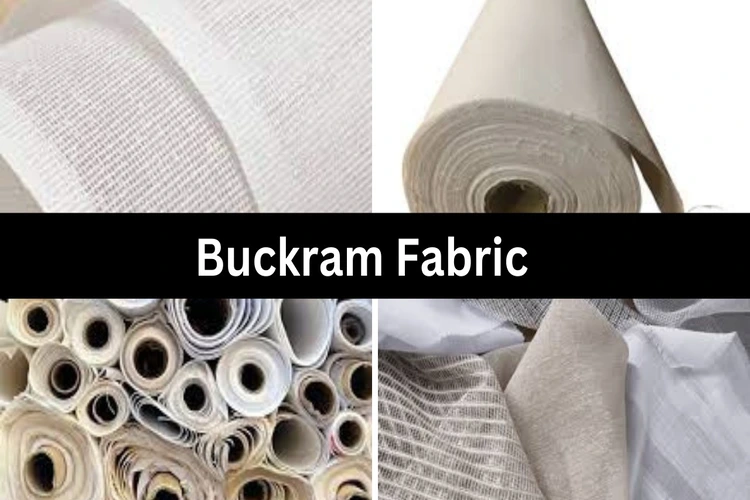What is Buckram fabric?
Buckram fabric, known for its rough, heavy, and open plain weave, is usually woven from cotton or hemp fibers. Its stiff and coarse texture results from being treated with starch and other sizing agents before drying. Mainly used to provide shape and structure to garments, buckram fabric is often stocked in the drapery section of fabric or arts and crafts stores. This durable and affordable material is also referred to as crinoline and bookbinding cloth.
The Origins Of Buckram Fabric
Tracing the origins of buckram fabric offers insights into its name’s source. While its etymology remains uncertain, experts in textiles and history propose that it could have stemmed from Bukhara, a city in Uzbekistan renowned for its production of this fabric. Alternatively, some theorize that it evolved from the term “Bokeram,” which referred to a basic cotton fabric.
Having roots that stretch back to the Middle Ages, buckram has solidified its position as a foundational material in the textile industry. Valued for its durability and adaptability, it has become indispensable in garment and fashion sectors, maintaining its significance to this day. Frequently employed for book covers, buckram fabric also acts as a reinforcement for curtains and draperies, fabric interfacing, and as a component for molding and shaping.
Properties Of Buckram Fabric
To delve deeper into Buckram fabric, it’s crucial to explore its distinct features that set it apart from other materials and determine its specific uses.
- Strength and Durability: Treated with a sizing agent, Buckram fabric becomes more rigid, durable, and strong. This makes it a worthwhile investment, capable of enduring rough handling and lasting for many years.
- Shape Retention: Buckram fabric excels as an interlining and stiffening material because it can maintain its shape effectively. This characteristic makes it a preferred option for hats and accessories that require a defined structure.
- Water Resistance: With its coating, Buckram fabric exhibits water-resistant properties, preventing liquids from penetrating the material and ensuring resilience in various conditions.
Types Of Buckram Fabric
There’s a variety of buckram fabric types available, mainly falling into two categories: one-ply and two-ply weaves.
- One-Ply Buckram Fabric: Made from a single woven cotton fabric, one-ply buckram comes in light, medium, and heavy weights, commonly used for hat frames and covers, providing support for felt and straw hats. Beyond headwear, it’s suitable for bookbinding, garment shaping, and other clothing elements.
- One-ply light has a delicate weave with 48/50 threads per inch, ideal for trim work and ribbons.
- One-ply medium, with 26/30 threads per inch, works well for flat pattern hats.
- One-ply heavy, boasting 17/20 threads per inch, is heavily sized and coarser, perfect for blocking or providing a robust frame for hats.
2. Two-Ply Buckram Fabric: Two-ply buckram is a heavily sized fabric, featuring plain weave cotton attached to a refined fabric. It’s commonly used in hat frames and stiff foundation costumes. Primarily used for hat frames, it’s heavier than one-ply varieties, known as crown buckram, typically sold in 40-inch widths by the yard. This fabric finds applications in draperies, curtain lining, interfacing, and providing structure to bags and purses.
You can bolster the stiffness and durability of two layers of one-ply buckram by steam ironing them. Alternatively, adding a domette (thin batting) can result in a softer lining and polished finish for your buckram fabric.

Millinery buckram stands apart from standard strengthening and bookbinding buckram cloth. It finds primary application in hat making, purses, baseball caps, and corsets, serving to shape these accessories according to preference. After being soaked in a strengthening agent such as starch or resin, it is molded by the creator while still wet to achieve the desired form. Once dried, it maintains this shape, enabling the creation of hats and other finely crafted headwear using this 100% cotton material.
Applications Of Buckram Fabric
Despite its stiffness and unique characteristics, buckram serves its purpose well, as there is no other fabric quite like it.
- Clothing Interfacing: Buckram serves as a primary material for clothing interfacing, adding rigidity and structure when placed between fabric layers in areas like necklines, cuffs, and shirt collars.
- Draperies and Curtains: In draperies and curtain fabrics, buckram provides essential support to stabilize the material, ensuring smooth movement across curtain rods without creasing or dragging. It’s also utilized in pleating for decorative purposes and acts as an insulator by blocking airflow from windows.
- Bookbinding: Buckram’s durability and availability in various shades and hues make it a favored material for bookbinding, offering both aesthetic appeal and practicality for binding purposes.
- Burlesque Clothing: Buckram fabric enhances the allure of burlesque clothing, contributing to its dramatic and sensual appeal through its unique characteristics and distinctive features.
You may also like:
- Count of Yarn: Explanation and Varieties
- Yarn Manufacturing Process
- Varieties of Woven Fabrics and Their Applications
- Non Woven Geotextile Fabric
- What is Sisal Fiber? Properties, Structure, and How It Made?
- Pina Fiber: History, Properties, Production Process
- Coir Fiber: Properties, Production Process and Advantages
- Rayon Fiber: History, Properties, Advantages and Disadvantages
- Acrylic Fiber: History, Properties, Advantages and Disadvantages
- Nylon Fiber: Properties, Advantages and Disadvantages
Share this Article!

